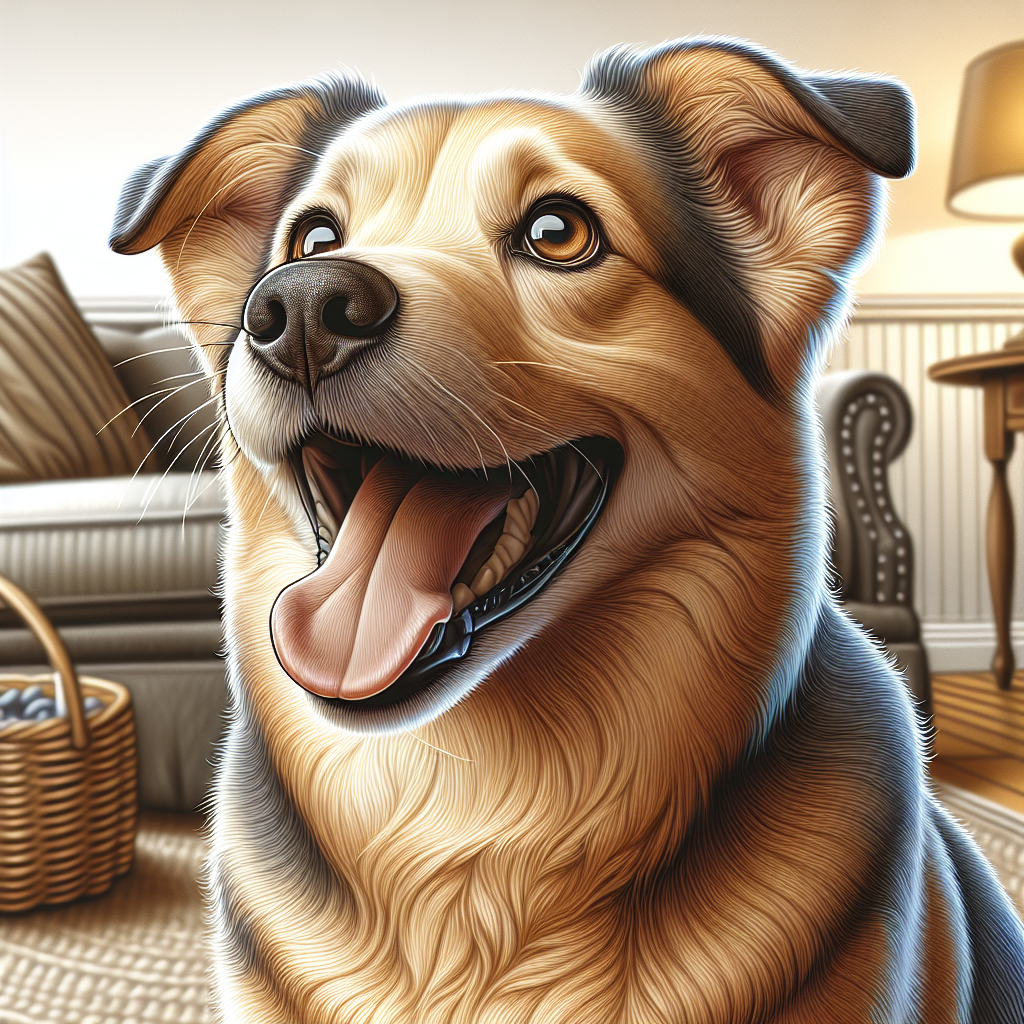Let’s Talk Fleas: The Uninvited Guests

Ah, fleas. Those pesky little jumpers that seem to pop up just when you think you’ve got everything under control. They’re like the relative who overstays their welcome—except these guests bite, literally. If you’ve ever dealt with a flea infestation, you know it’s not just your pet’s problem. It’s your problem, too. These tiny creatures can turn your cozy home into a battleground. Why do fleas keep coming back? It’s the question that haunts every pet owner.
It’s not just about a few fleas on your dog or cat. It’s often about how they’ve made themselves at home in your carpet, furniture, and even that old sweater in the back of your closet. The flea infestation causes aren’t always obvious, but once they’re in, they’re hard to evict.
The Flea Life Cycle: Know Your Enemy
To outsmart a flea, you gotta think like a flea. Understanding the flea life cycle is key to figuring out why they keep coming back. Fleas have a sneaky way of surviving—like that friend who somehow always manages to dodge the bill at dinner. They go through four stages: egg, larva, pupa, and adult.
The adult fleas are the ones you see hopping around, but they’re just the tip of the iceberg. The eggs they lay are tiny, almost invisible. They fall off your pet and get cozy in your home flea environment. Larvae hatch and squirm their way into dark, protected places. Meanwhile, the pupae are wrapped up in these little cocoons, waiting for the right moment to emerge.
This process can take anywhere from a couple of weeks to several months, depending on conditions. And while you’re busy dealing with the adults, the next generation is just waiting to hatch and start the cycle all over again. It’s like a bad horror movie on replay.
Environmental Infestations: Home Sweet Home For Fleas
Your home can become a flea’s paradise faster than you’d think. Warm, humid environments—like your living room in July—are perfect for fleas. They don’t just hang out on your pets; they explore. Rugs, couches, and even that dusty corner behind the TV can become prime real estate for a flea family.
A flea infestation isn’t just about spotting a few fleas. It’s about understanding the home flea environment. When you notice a few fleas, there are probably many more lurking in the shadows. It’s almost like they’re mocking you, daring you to find them all.
Regular cleaning can help, but it’s not always enough. These little pests are experts at hiding. You might vacuum your floors, but they can nestle deep into the fibers of your carpet. And let’s be honest, who wants to spend their weekend steam-cleaning every surface?
Why Flea Treatments Seem to Fail
Ever wondered why that expensive flea treatment didn’t work as promised? You’re not alone. Flea treatment effectiveness varies, and sometimes it seems like these critters just laugh at our attempts to get rid of them.
Part of the problem is timing. If you don’t treat all the stages of the flea life cycle, you’re just playing whack-a-mole. You might kill the adult fleas, but the eggs and larvae are still there, waiting to pounce. It’s like trying to empty a bathtub with a thimble.
Moreover, not all flea treatments are created equal. Some are more effective than others, and some fleas are getting smarter—or maybe just more stubborn. It’s a real kick in the teeth when you think you’ve got it sorted, only to see your pet scratching again a week later.
The Role of Your Pet’s Health in Flea Control
Let’s not forget the star of the show—your pet. Their health plays a huge role in flea control. A healthy pet is less appealing to fleas. It’s like they’re wearing a sign that says, “Not today, fleas!”
Controlling fleas in pets isn’t just about the latest treatment. It’s about keeping them healthy, too. Good nutrition boosts your pet’s immune system, making it harder for fleas to take hold. Regular grooming helps, too, keeping your pet’s coat in top condition and making it less inviting for fleas.
Preventing fleas in dogs and cats is a full-time job. It means regular check-ups, a balanced diet, and maybe even a little extra pampering. After all, a happy pet is a healthier pet.
It’s not easy, and it takes time, but remember—you’re not alone in this fight against fleas. So, next time you’re battling these tiny invaders, take a deep breath. You’ve got this. Thanks for sticking with me through the nitty-gritty of flea control. Good luck, and may your home remain flea-free!
The Flea Life Cycle: Back with a Vengeance
Fleas—they’re like that song you can’t get out of your head. You think it’s gone, and then bam, it’s back. And why? Well, it’s all in the flea life cycle. These little jerks are the Houdinis of the insect world with their flea life cycle stages. You’ve got eggs, larvae, pupae, and adults. Miss any stage, and they’re back. It’s like they’ve got a secret handshake or something. You vacuum, you spray, you treat your pets, but if you don’t hit all stages, it’s like trying to catch rain with a sieve.
Eggs are laid, and they fall off your pet like confetti at a parade. Then they hatch into larvae, which are tiny, blind, and hungry. They munch on flea dirt—yeah, that’s a nice way of saying adult flea poop. Larvae spin cocoons and turn into pupae, which are super tough to kill. They can wait, hidden in your carpet or sofa, for months until the timing is just right to emerge as adult fleas. And bam—they’re back, ready to start the cycle all over again. It’s a relentless cycle that keeps them coming back.
Tackling Flea Infestations: Prevention Tips
So, how do you prevent flea infestations? Well, it’s like trying to stop a toddler from coloring on the walls. You need constant vigilance. Prevention is key, and it’s not just one thing—it’s a bunch of little things. Think of effective flea prevention tips like a Swiss Army knife: multiple tools for different jobs.
First, treat your pets regularly. Those monthly treatments? They’re not just for show. Skip one, and you’re inviting fleas to set up shop. Vacuuming is your new best friend. Suck up those eggs and larvae before they have a chance to grow up and haunt your dreams. Wash your pet’s bedding in hot water. Heat is not a flea’s friend.
Check out your yard, too. Fleas love shady spots and tall grass. Keep the lawn trimmed, and maybe sprinkle some diatomaceous earth—natural stuff that’s safe for pets but murder on fleas. And don’t forget flea collars or spot treatments for your pets. It’s all about layers of protection. You don’t want to give those fleas an inch.
Common Mistakes in Flea Control
But let’s be real. We all screw up. You think you’re doing everything right, and then you find yourself scratching your head—literally and figuratively. Common flea control mistakes? We’ve all been there.
Skipping a treatment happens more often than you’d think. You get busy, you forget, and then, surprise! Fleas are back. Or maybe you’re using the wrong products. Not all flea treatments are created equal, and some might not even work on the type of fleas you’re dealing with.
Here’s another: thinking one treatment is enough. You’ve got to stay on it like white on rice. Fleas are sneaky, and they’ll find any crack in your defenses. And don’t forget your home. Treating your pet is only part of the battle. If you don’t tackle the environment, it’s like pouring water into a leaky bucket.
Fleas and Your Pet’s Health: Hidden Dangers
Now, let’s talk about the hidden dangers of fleas on pets. They’re not just itchy nuisances. A flea bite can lead to flea allergy dermatitis, which is a fancy way of saying your pet will itch like crazy. And then there are the diseases—like tapeworms. Yep, a pet swallows a flea, and next thing you know, they’ve got a worm problem.
And let’s not forget anemia. Now, that’s a big word for a small problem. But if enough fleas are feeding on your pet, it can happen. Tiny vampires are stealing your pet’s blood, one bite at a time. It’s not just about comfort—your pet’s health is on the line.
DIY Flea Control: What Works and What Doesn’t
For those who love a little elbow grease, DIY flea control methods can be tempting. But not all of them are winners. Some are just old wives’ tales that don’t do squat.
Take vinegar, for instance. Smells awful, right? But fleas don’t care. You’re just going to have a vinegar-scented house with fleas still hanging around. Then there’s the idea of using essential oils. Some work—like cedarwood or lavender—but you have to be careful. Too much, and it’s harmful to pets.
What does work? Diatomaceous earth, as mentioned earlier. It’s like walking on broken glass for fleas. Flea traps with a little dish soap and water can catch some adults, but don’t rely on it alone. And those flea bombs? They might kill some, but they’re not a magic bullet.
So there you have it. Fleas keep coming back, but armed with knowledge, you’ve got a fighting chance. Thanks for sticking with me through this flea-ridden journey. Here’s to fewer fleas and more peace in your home.
The Sneaky Development: How Fleas Outsmart Us
Ah, fleas. Those little jumpers that keep coming back like a bad penny. You’ve probably tried everything, but somehow, they’re still there. It’s like they know what you’re thinking. They’ve got tricks up their tiny sleeves—flea life cycle surprises that catch us off guard. It’s not just about hopping around and making pets itch. No, these critters are crafty.
They start off as eggs, then turn into larvae, cocoon themselves, and—bam!—they’re back as full-grown fleas ready to party. Each stage has its own set of challenges. Ever tried catching a flea egg? Good luck with that. They’re about the size of a grain of sand. And those cocoons? They can hang around for months, just waiting for the perfect moment to hatch. It’s a relentless cycle, and if you miss one stage, well, guess what? You’re back to square one.
Hidden Spots: Places You’d Never Think to Check
So, you’re sitting on your couch, sipping coffee, thinking you’ve flea-proofed your home. But have you? These little beasts have a knack for finding unexpected flea hiding places. It’s not just about the pet’s bed anymore. Think curtains, under furniture, and—get this—even the seams of your couch. They’re like tiny ninjas.
I remember one summer, I spent hours vacuuming—only to find a colony in my car. Yes, my car! It was like they hitched a ride on my dog and set up camp. Fleas can hide in the smallest of places, and unless you’re Sherlock Holmes with a flea obsession, it’s easy to miss them.
Natural Remedies: More Than Just a Witch’s Brew
Now, I’m not one for magic potions, but natural flea remedies home can work. No witch’s brew needed. I’m talking about things you probably have in your pantry—like vinegar or lemon juice. It’s not about casting spells; it’s about using what you’ve got. I’ve seen pet owners create mixtures that smell like a salad dressing but work wonders.
One time, I tried a mix of water and apple cider vinegar. My dog smelled like a chip shop, but hey, it did the trick. And guess what? No chemicals. Just good old-fashioned kitchen magic. Sustainable flea solutions don’t have to be expensive. Sometimes, the best answers are right under your nose—or in your kitchen cabinet.
Pet Diets: Could Food Be the Key?
Alright, let’s talk food. Could flea prevention through diet be the secret weapon? Some folks swear by it—feeding their pets certain foods or supplements to keep fleas at bay. Flaxseed, Brewer’s yeast, and even garlic (in small doses) have been mentioned. I once met a guy who fed his dog garlic every day. He claimed it worked, but his dog had breath that could knock you out.
The idea is simple: Make your pet less appetizing to fleas. It’s not about starving them; it’s about adding a little something extra to their diet. It might not work for everyone, but it’s worth exploring. After all, if changing a few things in the menu can help, why not try it? It’s a small price to pay for a flea-free life.
A Game Plan: Moving Forward Without Fleas
So, you’ve battled fleas, and you’re still standing. Now what? You need a long-term flea control plan. It’s not just about reacting—it’s about being proactive. Regular cleaning, washing pet bedding, and keeping up with those natural remedies. It’s a never-ending game, but one you can win.
Think of it as a lifestyle change. Flea-proofing your home isn’t a one-time thing. It’s like flossing—annoying but necessary. And hey, persistence pays off. One summer, I spent every Saturday morning vacuuming and washing. By fall, not a flea in sight. It took effort, but the peace of mind was worth it.
Alright, folks, let’s wrap this up. You’ve been on a journey with these sneaky little buggers long enough. Remember, persistence is key—just like those fleas. Thanks for sticking with me on this wild ride. Here’s to a flea-free life. Cheers!
Quick Takeaways:
Fleas keep coming back like that song you can’t get out of your head. It’s maddening, right? Well, there’s a reason for it. First off, understanding the flea life cycle is key. These little critters have a knack for survival. From egg to adult, they adapt like pros. You miss one step in their cycle, and boom—they’re back. Flea infestations are not just about the adult fleas you see; it’s about the eggs, larvae, and pupae lurking around.
Your home is a flea’s paradise if you’re not vigilant. They love hiding in carpets, bedding, and even that cozy spot where your pet curls up. Flea treatment effectiveness depends on hitting all stages of their life cycle. Skipping a treatment or using the wrong product can invite them back. It’s like leaving the door open for them.
Pet health and flea prevention go hand in hand. Fleas aren’t just annoying; they can lead to serious health issues for your furry friends. Keeping your pets flea-free is crucial. Regular treatments, grooming, and a clean living environment help in controlling fleas in pets.
DIY flea control methods can be tempting, but not all are effective. Some natural flea remedies might work, while others are just old wives’ tales. Prevention is better than cure. A long-term flea control plan is essential to prevent flea infestations. Remember, persistence is key.
FAQs:
1.
Why do fleas keep coming back even after treatment?
Fleas keep coming back mainly because their life cycle is complex and spans multiple stages—egg, larva, pupa, and adult. If a treatment doesn’t target all stages, you’re only seeing temporary relief. Also, it’s important to treat not just your pet but their environment. Ensuring your home is not a flea-friendly environment requires regular cleaning and vacuuming.
2.
How can I prevent flea infestations in my home?
Preventing flea infestations starts with understanding the flea life cycle. Consistent flea treatment for your pets is crucial. Vacuum regularly, wash pet bedding, and keep your yard tidy. Fleas love dark, moist spots, so keep those areas in check. Consider using flea-proofing products for your home as an extra measure.
3.
What are common flea control mistakes?
One common mistake is inconsistent treatment. Flea treatment effectiveness depends on regular application—missing a dose can let fleas regroup. Using outdated or incorrect products is another mistake. Always use vet-recommended products and follow instructions. Lastly, focusing only on pets without treating the home environment can lead to fleas coming back.
4.
How do fleas affect pet health?
Fleas can cause more than just itching. They can lead to flea allergy dermatitis, anemia, and even tapeworms if ingested. In severe cases, they can be life-threatening, especially for young or small pets. Regular check-ups and flea prevention measures are essential to avoid these flea-related pet health issues.
5.
Are there effective natural flea remedies for home use?
Yes, some natural flea remedies can help. Diatomaceous earth, for example, is a natural powder that can kill fleas by dehydrating them. Essential oils like lavender or cedar can repel fleas, but be careful—they’re not always safe for pets. Always do a patch test and consult your vet before trying any new DIY flea control methods.
Conclusion:
So, why do fleas keep coming back? It’s all about their resilience and life cycle. Fleas are survival experts, and if you miss a step in your control plan, they’re ready to pounce again. Understanding flea life cycle stages is key in breaking their grip. Treat your pets and home diligently, and remember, persistence pays off. It might feel like a never-ending battle, but staying on top of flea prevention through consistent efforts can save you a lot of trouble.
Life with pets is better without fleas. Take the steps to ensure your furry friends are happy and healthy, and your home remains a flea-free zone. Thanks for joining me on this flea-fighting journey. Here’s to fewer fleas and more peace. Keep fighting the good fight, and may your home be a haven for your pets, not for fleas. Cheers to a flea-free life!
References:
1. [RSPCA – How to spot signs of fleas and how to treat your pet and home](https://www.rspca.org.uk/adviceandwelfare/pets/general/fleas)
2. [PDSA – Will fleas keep coming back?](https://www.pdsa.org.uk/pet-help-and-advice/pet-health-hub/conditions/fleas-on-dogs)
3. [Nexgard – Environmental infestation and flea reinfestation](https://nexgard.com.au/dog-parasites/fleas)
4. [Frontline – Why are fleas still alive after treatment](https://uk.frontline.com/pet-advice/why-are-fleas-still-alive-after-treatment)
5. [Itchpet – Flea treatment and hyperactivity](https://www.itchpet.com/blog/post/why-does-my-pet-keep-getting-fleas)
Our solution eradicates fleas on contact without harmful chemicals, ensuring a safe environment for your pets and family. Easy to use and highly effective, SayByeBugs helps you maintain a flea-free home. Learn more and order today at SayByeBugs.com
Our solution eradicates fleas on contact without harmful chemicals, ensuring a safe environment for your pets and family. Easy to use and highly effective, SayByeBugs helps you maintain a flea-free home. Learn more and order today at SayByeBugs.com








